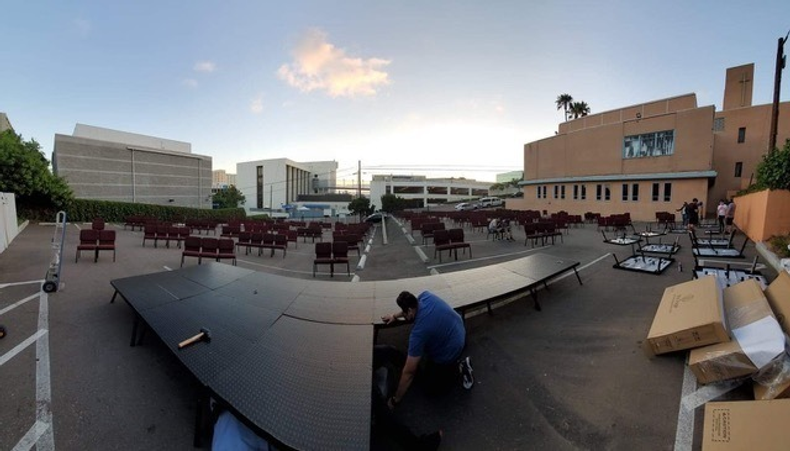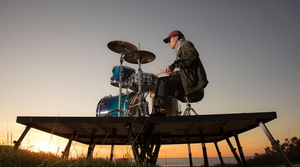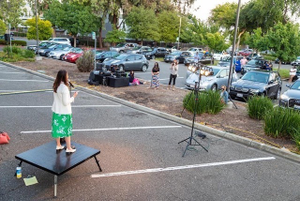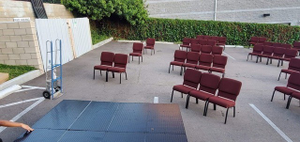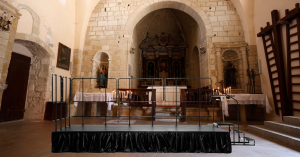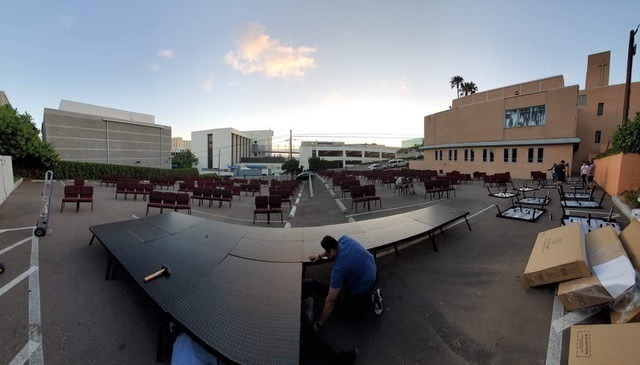
Even the best-planned events can run into staging challenges. From uneven ground and heavy equipment to limited crew sizes and tight timelines, organizers often face obstacles that can disrupt schedules and performances. But here's the good news: modern modular staging systems offer practical solutions that help crews deliver safe, professional events with ease, ensuring a seamless experience for everyone involved.
Tackling Common Staging Problems with Confidence
Every event, whether it's a concert, corporate gathering, or community festival, can face staging issues. The good news is that these challenges are more manageable than ever. Whether you're dealing with challenges in event stage setup, portable stage problem solutions, or other common staging fixes, there are reliable options available to resolve them swiftly.
Key Highlights
- Adjustable legs keep stages secure on uneven ground.
- Lightweight modular platforms simplify transport and setup.
- Secure locking systems prevent wobble under heavy loads.
- Accessories like handrails and stairs improve safety and accessibility.
- Proper transport tools reduce crew fatigue and setup time.
Uneven Surfaces and Leveling Issues
One of the most common challenges in event stage setup happens when stages are set up on uneven ground, such as grass, gravel, or dirt. Without the right tools, these surfaces can cause stages to tilt, resulting in potential safety risks for performers and crew. Adjustable legs on portable stages are an excellent solution to this issue, allowing for quick adjustments that ensure a stable, level stage platform no matter the terrain.
For musical performances or theatrical productions, where heavy equipment plays a key role, having a stage that's stable and level is vital. With adjustable legs, you can quickly set the stage at the right height, preventing any unwanted movement and ensuring a polished performance. This is a huge advantage in settings where portable stage problem solutions can make or break the show.
Transport and Crew Limitations
Another hurdle many organizers face is transporting heavy, traditional stages that require a large crew and specialized equipment. Fortunately, modern modular systems are designed to be lightweight and foldable, making transportation much easier and more efficient. These systems are perfect for smaller crews or events on the go.
For example, a touring production might rely on lightweight, modular platforms that fold into compact units, significantly cutting down on the time and crew required for setup. In addition, using transport tools such as carts helps further streamline the process and reduce physical strain on crew members. When you're dealing with tight timelines, common staging fixes like these are essential to keeping things running smoothly.
Wobble and Stability Concerns
There's nothing worse than having a stage that wobbles or shifts during a performance. The last thing you want is to make performers nervous or risk injury. To avoid these issues, modern modular stages use secure locking clamps and reinforced joints that keep the platforms stable even under pressure. This ensures a safe environment for performers and a smooth experience for the audience.
Adding accessories like portable handrails for steps and guardrails around the stage further improves stability and prevents accidental falls or injuries. This makes the setup safer for everyone, particularly in high-energy performances, where the challenges in event stage setup can be particularly noticeable.
Accessibility and Safety Features
Event organizers know that accessibility is crucial to creating inclusive, safe events. Providing smooth, safe access for performers and the audience is non-negotiable. That's where portable stairs, ramps, and guardrails come in. These safety features ensure that everyone, from the smallest performer to the largest crew member, can access the stage with ease.
Having a stage that can be accessed safely is especially important for events like school productions, community shows, or concerts, where different people with varying mobility may be involved. Using portable stage problem solutions like ramps and stairs keeps the event moving forward without unnecessary delays, ensuring a smoother flow for everyone.
Storage and Maintenance Problems
Storage and maintenance can also pose challenges, especially when staging systems are used frequently. Modular staging platforms are designed to be stackable, saving space when not in use. The materials used are durable and resistant to wear and tear, meaning less time spent on maintenance between events.
Materials like aluminum prevent rust and corrosion, while coated decks resist scratches and moisture, even with frequent use. Proper storage practices, like stacking and storing in dry areas, help extend the life of the equipment, saving organizers time and money in the long run.
Real-World Applications
- Outdoor festivals: Adjustable legs stabilize decks on muddy or uneven grounds, allowing for seamless setups even in challenging outdoor environments.
- School auditoriums: Portable platforms can be easily set up and taken down by volunteers, reducing the burden on staff and saving time.
- Touring productions: Using lightweight, foldable decks eliminates the need for bulky custom-built stages, offering both savings and convenience for traveling crews.
These real-world applications demonstrate how portable staging provides real solutions for common staging fixes that event organizers encounter across various event types.
Streamlined Operations for Event Organizers
Event organizers who invest in high-quality portable staging systems quickly realize the benefits: smoother operations, safer performances, and reduced crew fatigue. The versatility and durability of modern staging solutions make them ideal for a wide range of events. Whether it's a small local performance or a large-scale production, portable stages give you the flexibility to handle any challenge that comes your way.
When dealing with challenges in event stage setup, the ability to quickly adjust to different needs without compromising safety or aesthetics is a major advantage. That's what makes portable staging such an important tool for organizers. With the right equipment, you can tackle common staging fixes with ease, ensuring that every event runs smoothly from start to finish.
The Perfect Pairing of Event Organizers and Portable Staging Systems
A major part of successful event planning is overcoming the obstacles that arise during setup. With portable modular stages, the challenges you face, whether it's leveling uneven ground or reducing crew fatigue, can be solved in minutes. The ease of transport, setup, and teardown makes these systems ideal for both small events and larger productions.
If you're tired of dealing with outdated or cumbersome equipment that adds more work than it saves, it's time to look into more modern solutions. By investing in modular platforms, adjustable legs, and safety features like handrails and ramps, you'll be ready to take on any event challenge with confidence.
FAQs
1. How to level stages on uneven ground?
The best way to handle uneven surfaces is by using portable staging systems with adjustable legs. These systems allow for quick height adjustments to ensure the stage remains flat and safe, regardless of the terrain.
2. What if stages don't lock securely?
Make sure to select systems with reinforced joints and heavy-duty clamps. These secure the stage and prevent wobble even under heavy loads or during movement, providing a stable performance environment.
3. How to transport stages safely?
Portable systems are designed to fold up compactly for easy transport. Pair these systems with transport carts to reduce strain on your crew and make loading and unloading faster and safer.
With modular, flexible staging systems, common staging fixes are just a few clicks away. Overcoming challenges in event stage setup has never been easier, and your events will shine because of it.

